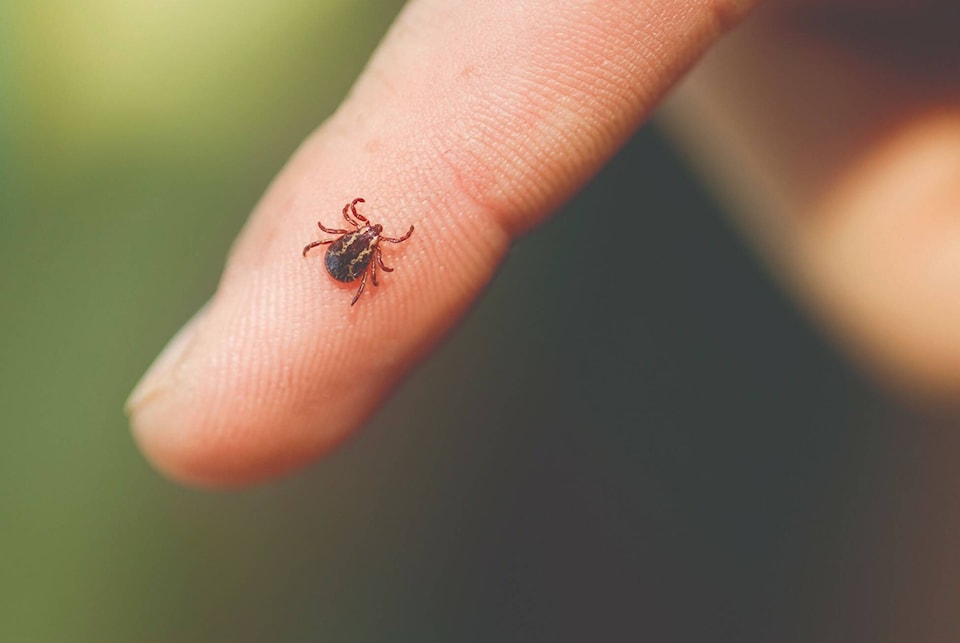‘Tis the season for ticks in the Cariboo.
With spring weather coming early this year, the ticks have been out for some time.
But this year has been worse than many, with one Cariboo Black Press reporter having picked off over 20 ticks so far for 2024.
The season is nowhere close to over either, with ticks normally picked up into June in this area.
Ticks are not unique to our part of the province, though they are plentiful.
Ticks are collected and tested by the BC Centre for Disease Control (BCCDC), which has long term data on ticks available online for 2002-2018.
In coastal areas of the province, ticks can be found year-round, according to the BCCDC.
Thanks to climate disruption and the changes it brings to ecosystems and the environment, tick species are spreading further across the province, and throughout more of the year everywhere they live, reports BCCDC.
But luckily for humans, other than giving us the creeps, the majority of ticks do not carry illness, though they can cause paralysis with their saliva if left to feed on an animal or person.
However, even when only one per cent of ticks tested carry the bacteria Borrelia burgdorferi, which causes Lyme disease, you definitely want to take precautions and know your facts around the possible illnesses related to ticks. Unfortunately, ticks are also possible carriers of anaplasmosis bacteria, which causes fever, chills, muscle and head aches, and babesiois, a rare blood infection.
The Western blacklegged ticks can carry Lyme disease, and the American dog tick or wood tick can carry Rocky Mountain spotted fever and tularemia, also known as ‘rabbit fever.’
Don’t know your wood tick from your black-legged tick? Don’t worry — there’s an app for that!
BCCDC recommends using eTick.ca or downloading the app on a smart phone. Follow the guidelines for taking a quality photo and submit it to help track tick species across the province and find out more about the tick you found.
But before you head out, an ounce of prevention is worth a pound of cure. The BCCDC recommends wearing light-coloured clothing so it is easier to spot ticks, wearing long sleeves and tucking in pants to socks and shirts into pants, wearing a hat and using bug repellent can all help keep ticks from your skin.
When you return, you should check yourself thoroughly, including your scalp, any skin folds, under arms and behind knees, for ticks. Help checking hard-to-see areas is also a good idea. Make sure to check pets and children too.
If you find a tick attached to your skin, it should be carefully removed with tweezers. Place the tweezers as close to the skin as possible and pull the tick slowly away from the skin.This helps ensure the entire body of the tick is removed. Place the tick in a small tight plastic container and keep in the freezer. If a rash develops where the bite occurred or a person feels unwell within 30 days of the tick bite, the tick can be sent for testing.
Between five and 39 cases of Lyme disease are reported in B.C. each year since 2006, with more than half of the cases of the disease identified as travel-related.
READ MORE: Williams Lake wife works to find living donor for husband
Don’t miss out on reading the latest local, provincial and national news offered at the Williams LakeTribune. Sign up for our free newsletter here.
